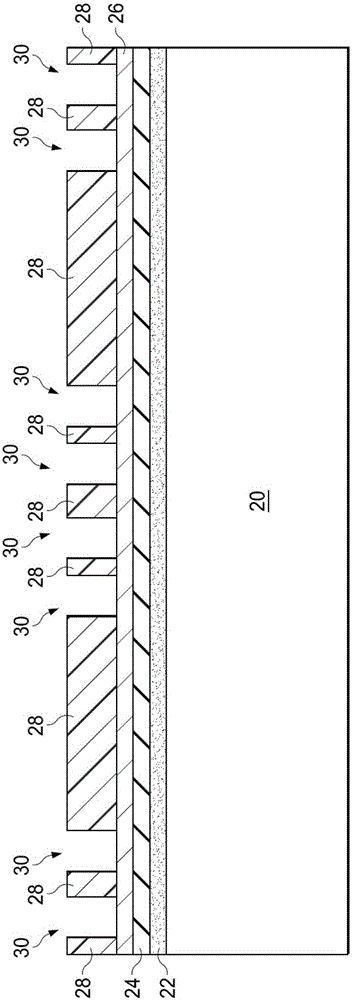Integrated Fan-Out Structure with Openings in Buffer Layer
A technology of buffer layer and laminated film, applied in the direction of electrical components, electrical solid devices, circuits, etc., can solve the problem of limiting the number of solder balls
- Summary
- Abstract
- Description
- Claims
- Application Information
AI Technical Summary
Problems solved by technology
Method used
Image
Examples
Embodiment Construction
[0033] The making and using of embodiments of the present disclosure are discussed in detail below. It should be appreciated, however, that the embodiments provide many applicable concepts that can be embodied under various specific conditions. The specific embodiments discussed are illustrative and do not limit the scope of the disclosure.
[0034] Integrated fan-out (InFO) packages including vias and methods of forming the same are provided according to various exemplary embodiments. Intermediate stages in forming the InFO package are shown. Variations of the examples are discussed. Like reference numerals are used to refer to like elements in the various views and illustrated embodiments.
[0035] Figure 1 to Figure 12 , Figure 13A , Figure 14A , Figure 15 with Figure 16 is a cross-sectional view of an intermediate stage of manufacturing a package structure according to some example embodiments. refer to figure 1 , the carrier 20 is set, and the adhesive laye...
PUM
| Property | Measurement | Unit |
|---|---|---|
| Height | aaaaa | aaaaa |
| The average diameter | aaaaa | aaaaa |
Abstract
Description
Claims
Application Information
 Login to View More
Login to View More - Generate Ideas
- Intellectual Property
- Life Sciences
- Materials
- Tech Scout
- Unparalleled Data Quality
- Higher Quality Content
- 60% Fewer Hallucinations
Browse by: Latest US Patents, China's latest patents, Technical Efficacy Thesaurus, Application Domain, Technology Topic, Popular Technical Reports.
© 2025 PatSnap. All rights reserved.Legal|Privacy policy|Modern Slavery Act Transparency Statement|Sitemap|About US| Contact US: help@patsnap.com



